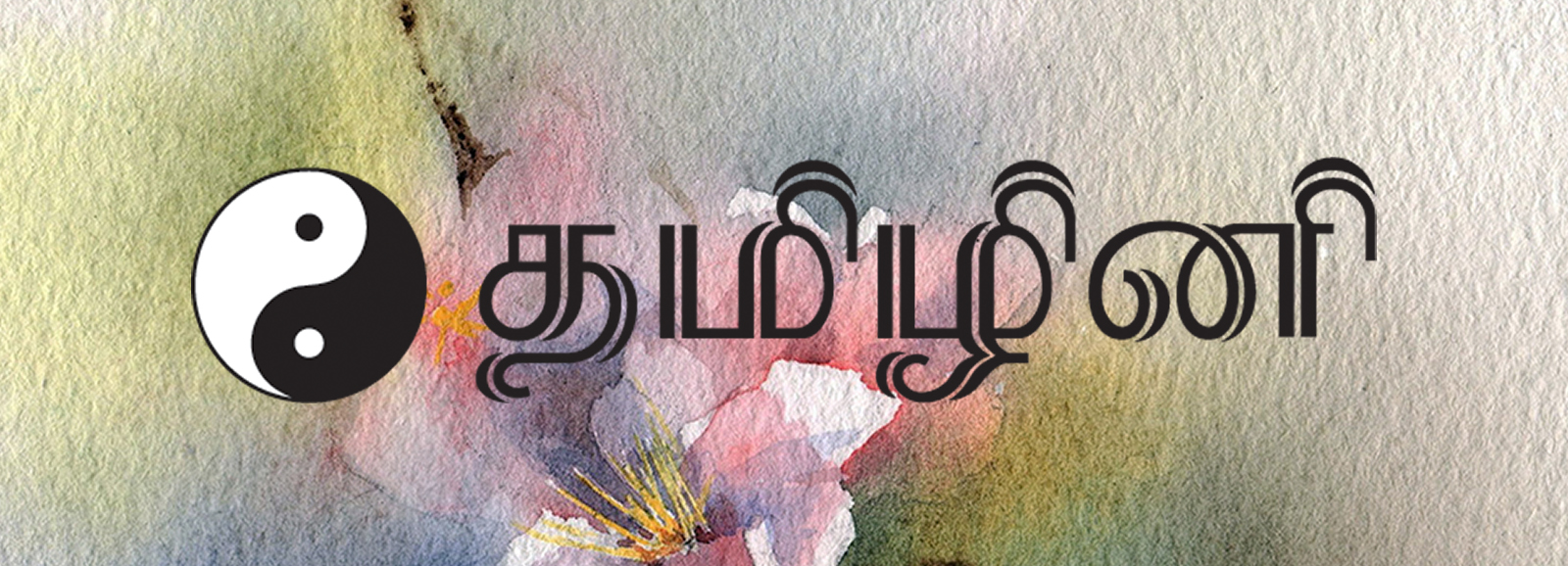Introduction
At the outset one has to understand what is meant by peace and then see how art in general contributes to that process of peace. In this presentation, first of all, the vision of religious traditions in the peace-process is brought in, since peace is not merely man’s achievement, but also it is God’s gift; secondly, the peace process requires some rational foundation, – a philosophy – and hence some Indian approaches to peace are highlighted as to what motivates us to work for peace; thirdly, how this philosophical foundation has to be translated into action, namely, the role of imagination in this process is presented; fourthly, some traditional symbols of peace as art forms are mentioned as part of the conclusions.
What is Peace?
Christian notion of Peace
One of the most significant biblical texts highlighting the meaning of peace in a Christian context is found in the Letter of Paul to the Ephesians, wherein Jesus is identified as our Peace. “But now in Christ Jesus you who once were far off have become near by the blood of Christ. For he is our peace, he who made both one and broke down the dividing wall of enmity”. [1] This text not only mysteriously identifies Jesus as our peace, but also relates peace with peacemaking. The “enmity” directly referred to in this Ephesians text was that between Gentile and Jew in those earliest years of Christian life. However the profound theological understanding of this text situates all Christian peacemaking in the death and resurrection of Jesus- the paschal mystery.
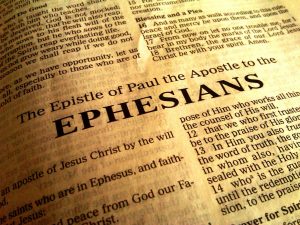
For those early Christians, receiving the peace of Jesus meant more than personal well-being. Jesus’ own peace included Jesus’ ways of peacemaking. To be children of God meant a peacemaking way of life, as Matthean beatitude stated clearly: “How blessed are the peace-makers; God shall call them his sons.” (Mt. 5.9). Peacemaking meant forgiveness and love of enemies in the spirit of the Gospel (Mt. 5, 43f; Lk. 6, 27f.). Peacemaking meant also a refusal to participate in warfare. Followers of Jesus could not reconcile war with Jesus’ witness to the making of peace. [2] This includes the value of non-violence, and reconciliation.
Hindu concept of peace
The word Shanti is currently used to denote peace, tranquility, calmness of mind, absence of passion. It is derived from the Sanskrit root –sam, which means to be appeased, to pacify, extinguish, subdue, conquer, etc. It is said that peace is absence of passion, lust, anger; and it is auspiciousness and calmness. The indeclinable particle ‘sam’ means generally welfare, happiness and prosperity and used in the sense of peace. The peace-mantra of the Artharvaveda runs as follows:
“May the sky be peaceful. May the atmosphere be peaceful.
May earth be peaceful. May waters be peaceful.
May medicinal herbs be peaceful. May plants be peaceful.
May all the learned persons be peaceful.
May God and the Vedas be peaceful.
May all the objects be peaceful;
May peace itself be peaceful.
May that peace come unto us.” (AV XIX, 9, 14)
To the heavens be peace, to the sky and the earth,
To the waters be peace, to plants and all trees,
To the Gods be peace, to Brahman be peace,
To all men be peace, again and again,
-Peace also to me! [3] (YV XXXVI, 17)
Man may possess everything, but still he can be miserable, if he is lacking in that gift of the gods which does not depend on any other gift, on which all other gifts depend, if they are to be real blessings for man: peace. Human fullness is incomplete without peace, whereas even the one who lacks everything else can still have peace within himself and peace with all beings, which in fact constitutes happiness. The Vedas were deeply aware of this and thus of the constant necessity to invoke peace with all the power of the mantra.
“The discord and dissonances in the universe and among men have first to be pacified before any real, that is, sacred, act can take place. Here again we find a process of theanthropocosmic interaction. There can be no peace in the human heart if there is no peace on earth, but conversely there can be no earthly peace if there is discord in man’s inner being. The one affects the other and, at the same time, both interact with the world of the Gods in the same kind of double relationship.” [4]
Man is the powerful mediator, because he alone is capable of uttering his prayer for peace. He even utters peace to Brahman. God is not only in and through prayer – he is Prayer. For this man needs the collaboration of all the gods: to establish peace in heaven, in the atmosphere and on earth.
Philosophy of peace
Peace is not absence of war, violence and conflict. Peace is basically harmony of all reality, which is simultaneously the cause and effect of peace. Harmony is an effect of peace, because it is born out of the reconciling spirit; it is the cause of peace, because harmony is the potency and reestablishes the harmony of the universe.
Peace is the participation in the harmony of the rhythm of being, says Raimon Panikkar. [5] It signifies participation and contribution to the constitutive rhythm of reality. Human being is not only a social being, but s/he is also a cosmic being – therefore cosmotheandric. We are also responsible for the harmony of the universe: we improve and transform it by cooperating with the reality. This cooperation is active and passive at the same time, as in a dance performance moving according to the rhythm of music.
Peace is possible only when all participate in the decision-making process for the sake of the community. There is no question of neutrality or withdrawal in this responsible task. The foundation here is that “freedom is possible only where freedom makes room for others’ freedom.” [6] Thus freedom includes essentially togetherness and communication. Only on the basis of communication and exchange does the concept of individual subject or person become intelligible. The individual person opens himself/herself in his/her freedom to the interaction with other persons. The “I” opens itself to the “we” and stands thus in the original space of inter-personality. [7] The individual experiences his greatness and fulfillment only then, when he/she opens himself/herself or transcends into the divine reality or allows oneself to be percolated by that reality.
The same thing should happen in the decision-making council in search of truth and not from the personal interest or the group interest. The opening of “I” to the “We” is finally possible, only if all members of the council let themselves to the common search for truth. This may sound nice, but not easy to deal with friend and foe alike. In such a situation one has to be led by the divine guidance as in the case of Arjuna of the Bhagavad Gita.
Working together for peace is a must. Strategic planning and state control alone are not enough. Peace in the decision-making councils is possible and there are luckily enough examples for it. But the presupposition is however the continued readiness for transformation, for changing one’s philosophy of life, as Aurobindo would say, “all life is yoga.” [8]
In the Indian traditions – Hinduism, Buddhism and Jainism – the reasons are given, why we should all thus strive for peace: to work together, pray together, think together, as the Vedic hymn exhorts all of us. The man with transcendental wisdom would be able “to see all beings in the Self only and the Self in all beings; therefore he does not have any doubts, nor does he have any revulsion.” “The man whose self has been integrated by yoga sees the self in all beings and all beings in the Self; he sees the same everywhere.” (Gita VI, 29, 32) By analogy with oneself when one realizes that what is good or bad for oneself must be so for others, one would always do only what is good for others. He would be engaged in the welfare of all beings (lokasangraha, sarvabhutahite).
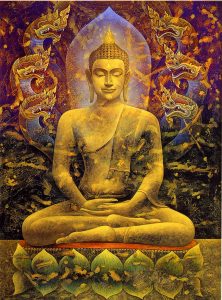
Like Bhagavad Gita, also the Buddhist text Dhammapada (5) says: “enmity is never anywhere appeased by enmity, but only by non-enmity”. Buddhist texts in general argue that introspection reveals that no one and nothing is dearer than one to oneself; indeed for every individual he himself is the dearest. So, whoever loves himself should not injure or harm others. Realizing that like oneself all beings seek happiness, one should not come in the way of others’ happiness for the sake of one’s own happiness. Buddhism maintains that no being in this organically interrelated world has its own permanent intrinsic nature. So, as self-identity does not separate fellow-beings, every being is as much another as itself. This truth of selflessness (nairatmya) makes one realize that others are as much oneself as one is, that all equally desire happiness and dislike fear and suffering, that there is nothing unique about anyone and that, consequently, everyone is as much another as oneself. If people realize this, love (maitri) and compassion (karuna) would prevail in it. Such a harmonious society can have only harmonious relations with other such societies. Then there will be universal and perpetual peace. [9]
In one of the ancient poems of Tamil Tradition, in the Purananuru collection of poems, the poet Ilam Peruvaluthi, points out:
“The world exists, because
Some men do not eat alone,
Not even when they get the sweet ambrosia of the gods;
They have no anger in them,
they fear evils other men fear,
but never sleep over them;
give their lives for honor,
will not touch a gift of whole worlds, if tainted;
there is no faintness in their hearts,
and they do not strive for themselves.
Because such men are, this world exists.” [10]
This poem puts in a nutshell how the ‘peace’ is to be understood. The world exists, that is, is in rhythmic order, moves in harmony, just because the above mentioned factors are collaborating, i. e. such peace-makers are at work.
This state of mind or this conviction emerges from a deep spirituality and that has to be cultivated. This is effected by the role imagination plays in our life, which we take for granted. We usually talk about arts in general. Art works are finished products acting as symbols. But what is at work behind the creation is the imaginative power.
The role of imagination to achieve peace
Imagination is fundamental to all human activity, since it remembers the past, projects possibilities for the future, shapes human desire, and forms mental images of what is not actually present. Broadly understood, imagination is “the faculty that permits human beings to imitate, to intuit, to empathize and to create.” [11] In this sense, imagination, as the creative, critical and integrative process, is central to the discipline of spirituality.
In the Catholic tradition of spirituality three approaches to imagination could be identified: the Neo-platonic participation, Thomistic and critical hermeneutics exemplified by the writings of Paul Ricoeur.
Neo-platonic approach to the imagination stresses the participation of the believer in a sacred reality signified by religious symbols, rituals and images. For Augustine of Hippo (d. 430 C.E.) the experiences of the senses are the occasion of divine illumination. Symbols and rituals are a part of God’s lure. They attract the human to the higher realm of the spiritual and the divine. In contemporary spirituality this Neo-platonic trend can be found in the categories of Karl Jung, such as the universal archetypes which indicate each human participation in a collective unconscious. This draws the attention of the believer to the symbols images and the accompanying feelings that emerge in our dreams and prayer. These are revelatory of the broad unconscious and help one come to a discernment of spirits and healing memories.
Based on the work of Jung, Mircea Eliade’s universal myths and symbolism played a great role in the catholic liturgical theology integrating the experiences of various world religions. One is not here dealing with a collective unconscious, but with a conviction that all religions are manifestations of the sacred and possess a commonality of symbolism, ritual and narrative. Applying this sense of imagination to all forms of art and to their role in liturgy, Stephen Happel defines religious imagining as “an intentional operation in which symbolic images, gestures, sounds, words or actions disclose the ultimate horizon of God in human experience.” [12]
The second pattern flows from the influence of Thomas Aquinas (d. 1274) on the Catholic self-understanding. For Aquinas the imagination is one of the four inner senses of the soul. Imagination is valued primarily for its contribution to realistic conceptual thought. Aquinas appreciates the gifts of the Holy Spirit and also for the non-rational aspects of practical decisions guided by the virtue of prudence.
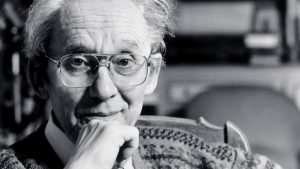
Paul Ricoeur
In the transcendental Thomism of the Bernard Lonergan, Karl Rahner and Edward Schillebeecks, human experience is the basis for reflection upon the meaning of revelation. In this understanding “imagination not only shapes the symbolic universe that is constitutive of human experience, but it is essential for interpreting its meaning and sharing that interpretation with others.” [13]
The third approach is the critical hermeneutics of Paul Ricoeur who assigns a privileged place to experiences of negativity and to the symbols of evil as the starting point for meaningful reflection leading to a fundamental affirmation of God’s gracious justification. Ricoeur’s theory explores the metaphorical properties of narratives, in order to specify and unlock the integrative and creative functions of story, that is, how imagination serves the interpretation of the Gospel parables, which are narrative metaphors, appealing to the poetic imagination. “In the work of interpretation, imagination creatively orients human existence to the past as memory, to the present as possibility and to the future as hope.” [14]
In contrast to the appreciation for all forms of symbolism (art, music, dance, etc.) found in the Neo-platonic trend, Ricoeur’s critical approach locates the domain of imagination in language. For him the final act of interpretation is the source of human hope and freedom, not merely a participation in divine reality. In fact it is our dreams that bring love into action and continue to give birth to hope. [15]
The Traditional Symbols of Peace
Dove with an Olive Branch
The dove with an olive branch is an emblem of Athene as renewal of life. The use of the olive as a symbol of peace dates back at least to the 5th century B.C. The olive tree represented plenty, but the ancient Greeks believed that it also drove away evil spirits. The olive branch was one of the attributes of Eirene, goddess of peace, whom the Romans called Pax, on Roman Imperial coins. Here is an image of Eirene standing holding a branch upward in her right hand.
Dove with an olive branch is a symbol of peace and also of renewed life. In Catholic Christianity the Virgin Mary is called the Queen of peace. There is a wall painting from the early Christian Catacombs of Marcellinus and Peter in Rome, showing Noah, in the praying attitude of prayer, the dove and an olive branch. Early Christians portrayed baptism accompanied by a dove holding an olive branch in its beak and used the image on their sepulchers as an allegory of peace.
Christians derived the symbol of the dove and olive branch from two sources. The first was the New Testament comparison between a dove and he Spirit of God that descended on Jesus during baptism. The second was the ancient gentile symbol of the olive branch.
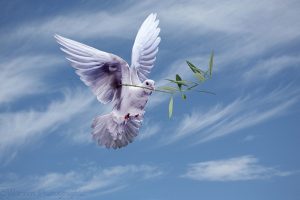
The dove of Noah’s ark brought back the olive branch of peace between God and man. The early Christians drew parallels between baptism and the flood. The First Epistle of Peter comparing the salvation through water in baptism to Noah’s salvation through water.(1 Peter 3, 20-21) Tertullian (ca. 160-220) compared Noah’s dove, who “announced to the world the assuagement of divine wrath, when she had been sent out of the ark and returned with olive branch” with the Holy Spirit in the form of a dove that descends in baptism, “bringing us the peace of God sent out from the heavens.” [16]
Mid 20th century Picasso’s lithograph, La Colombe (The Dove), a traditional, realistic picture of a pigeon, without an olive branch, was chosen as the emblem of the World Peace Congress in Paris in April 1949. At the 1952 World Peace Congress in Berlin, Picasso’s Dove was depicted in a banner above the stage. The dove symbol was used extensively in the post-war peace movement.
Calumet –the Pipe of Peace
With the North American Indians the Calumet is the Pipe of Peace. Pipe of Peace also symbolizes reconciliation, humility; sacrifice and purification. The integration of the individual with the Totality, becoming one with the fire of the Great Spirit. The round bowl of the pipe is the center of the universe, the heart; the smoke symbolically transports to heaven; the canal of the pipe is the spinal column and the channel of the vital spirit. [17] They used the pipe as a major means of communication with the spiritual world. As one smokes, the thoughts and prayers of the communicants are carried heavenward in the smoke. The joint act of sharing of the pipe was considered a common bond, or communion, among those who smoked. The pipe was actually used in the ratification of all solemn engagement, both of war and peace. [18]

Hindu Religious Symbols of Peace
Om is a symbol of peace among other things. The sacred sound, the imperishable word, the Absolute, The primordial AUM, the totality of all sounds, and that which penetrates and sustains the whole cosmos. The syllable Om is uttered along with the word shanti thrice. This triple recitation of shanti is directed to the three sources of disturbance that destroy mental peace: 1. aadhidaivikam – from the phenomenal powers like lightning, thunder, rain, earthquake etc.; 2. aadhibhautikam – from the environmental disturbances like noise around, animals prowling, insects crawling etc.; 3. aadhyaatmikam – from the disturbances springing from one’s own body or mind like sickness, worry etc.
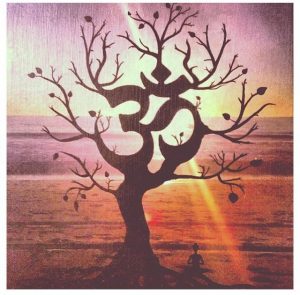
Swastika
Swastika is one of the oldest and most complex of symbols, prehistoric and universal except parts of Africa and Sumeria; found extensively in all Asia and in the pre-Aryan Indus valley civilization, used widely by Jain, Buddhist, and devotees of Vishnu.
The origin of the word Swastika – lit. “It is well”, – life and movement; happiness, good fortune, A symbol of the Vedic fire god and divine carpenter, Agni; the fire sticks, the ‘mystic double Arani’; also Dyaus, the ancient Aryan sky god, later Indra; also associated with Brahma, Surya, Vishnu, Siva and with Ganesha as pathfinder and god of he crossroads. The swastika is sometimes used as a seal on jars of holy water from the Ganges.
Conclusions
Finally, we come to the function of art. Whether art is rationally enlightening or awakening, casts shadows or brings light, it is never a clinical description of reality. “Its function is always to move the whole human person, to enable the ‘I’ to identify itself with another’s life, to make its own what it is not and yet is capable of being. In any case art is necessary in order that man/woman should be able to recognize and change the world.” [19]
That is, classical artists (like Homer or Sophocles, Vyasa or Kalidasa, Ilango or Kamban) remain always appealingly modern, in so far as they discovered the greatness of man/woman, gave artistic form to his/her conflicts and passions, and hinted at his/her infinite potentiality. The more we come to know of long-forgotten works of art, the clearer becomes their common and continuous elements despite their variety. Fragment joins fragment to make humanity.
Indian art history, for example, has that capacity to give order to human feelings and therefore to supply us with information which can be obtained from no other source. Whether we are examining the family, the caste, or the social order, as a whole, a background knowledge of how the Indian organizes the expression of his feelings helps to keep us in touch with the emotional substratum of his being. [20] The whole of mystic tradition in India is the product of a way of seeing all things as interconnected. If peace-making process requires continuous transformation on the part of the individual and society at large, then this task is done by art.
[1] Letter of St. Paul to Ephesians, 2: 13, 14
[2] Carol Francis Jegan, Peace, in: The New Dictionary of Catholic Spirituality, ed. Michael Downey, Liturgical Press Minnesota, 1993,732-733
[3] Dyau˙ ßåntir-antarika ßåntir-åpa˙ ßåntir-osadhaya˙ ßånti˙/
vanaspatay˙ ßåntir-vißve devå˙ ßåntir-brahma ßånti˙ sarvam ßånti˙
ßåntireva ßånti˙ så må ßantir-edhi˙// (Yajur Veda 36, 17) Translation from R. Panikkar.
[4] Raimon Panikkar, Vedic Experience, Mantramanjari, Motilal, Delhi (1979) 1989, 304
[5] Raimon Panikkar’s “Nine sutras of Peace”, in Peace and Inter-culturality (Pace e Interkulturalita. Una Reflessione Filosopica), Jaca Book, Milan, 2002
[6] Krings H., System und Freiheit, Karl Alber: Freiburg, 1980, p. 125
[7] For the foundation of a philosophy of inter-personality cf. Krings H. Transzendentale Logik, Kösel Verlag, München, 1964; Splett J., Freiheits-Erfahrung. Joseph Knecht: Frankfurt am Main, 1986
[8] Sri Aurobindo, On Yoga 1. The Synthesis of Yoga. Sri Aurobindo International university center collection, Sri Aurobindo Ashram Press, Pondicherry, 1955.
[9] Cf. K. Satchidananda Murty, “Indian Approaches to Peace, in: Philosophia Pacis, ed. Miquel Siguan, Simbolo editorial, Madrid, 1989, 75-84
[10] Purananuru 182, Poems of Love and War. From the eight Anthologies and the Ten Long Poems of Classical Tamil. Selected and Translated by A. K. Ramanujan, Columbia University Press, 1985, p. 157
[11] J. Noonan, Jr., New York Times Book Review, Feb. 25, 1990, p. 28. Quoted by Sally Ann McReynolds, N. D, in New Dictionary of Catholic Spirituality, ed. Michael Downey, The Liturgical Press, Minnesota, 1993, p. 531
[12] The New Dictionary of Theology, ed. J. Komonchak, M. Collins, D. Lane, Wilmington, Del,: Glazier, 1987, p. 502, quoted by Sally Ann McReynolds, p.533
[13] Sally Ann McReynolds, p. 534
[14] Ibid. p. 535
[15] In the Indian tradition there is so much of literature on the role of imagination in the process of salvation and in particular I would like to refer to the Kashmiri Saiva thinkers like Utpaladeva and Abhinavagupta who specifically deal with this question at length. Cf. Isabella Ratie, “A five-trunked, four-trunked elephant is running in the sky” – How free is Imagination According to Utpaladeva and Abhinavagupta?”, in Asiatische Studien LXIV. 2. 2010, 341-385
[16] Hall, Christopher A., ”Worshipping with the Church Fathers”, InerVarsity Press, 2009, p. 32. Google Books. 30 January 2010. Retrieved 21 February 2012.
[17] Cf. J. C. Cooper, An Illustrated Encyclopaedia of Traditional Symbols, Thames and Hudson, London, 1978, 28
[18] Cf. Christopher Nyerges, “Indian Calumet; The Pipe of Peace” from the google search.
[19] Ernst Fischer, The Necessity of Art. A Marxist Approach. Penguin Books, (1959) 1963, p.14
[20] Richard Lannoy, The Speaking Tree. A Study of Indian Culture and Society, Oxford University Press, 1971, xxii.
